Olemiswebs
... some for worse, some for better ...
- Home
- Archive by category "In English"
- Page 8
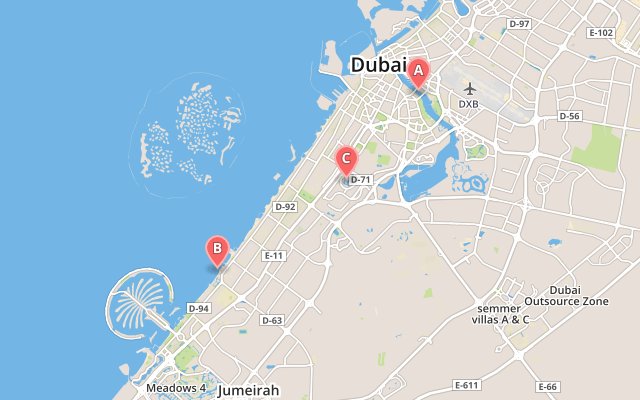
After more than 10 times in their airport, it was time to stop for one day in Dubai, and see what the most famous city in the Persian Gulf was all about.
I landed very early on a Friday morning, and started having the first issues. Friday is the rest day in the Muslim countries, and, while hearing to the morning pray in the airport, I discovered that Friday morning people are not expected to take the subway, not even from the airport. So I took a taxi, when it was still dark.
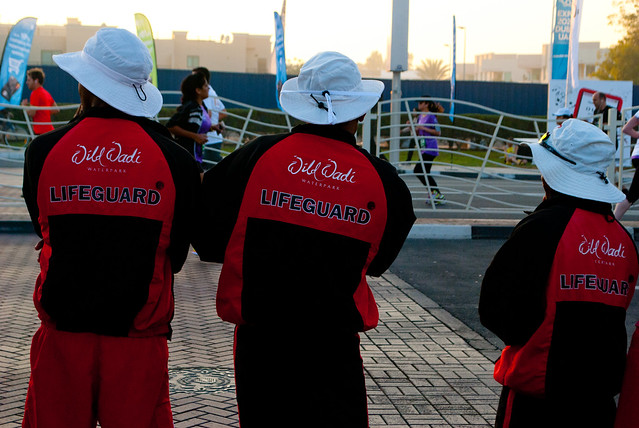 I started going to the Creek (A), where the port is located, and I found a big group from India doing yoga while the air is filled with the praying calls from the Mosques from all over the city, in what it seemed a competition to be heard more than nearby one.
I started going to the Creek (A), where the port is located, and I found a big group from India doing yoga while the air is filled with the praying calls from the Mosques from all over the city, in what it seemed a competition to be heard more than nearby one. 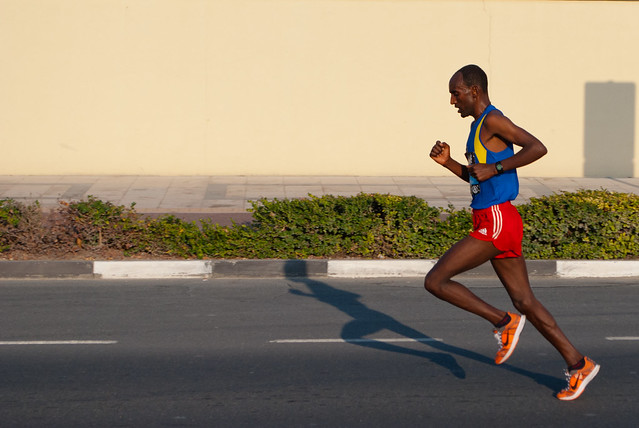 After seeing there was not much else to see for the moment there, my next stop was to go to Jumeirah (B) in the Southern part of Dubai, where the famous Burj Al Arab building sits, and I found that the Dubai marathon was taking place that day. This complicated slightly the logistics for the rest of the day, but I managed to walk around Jumeirah to see the mansions and cars in that (good) area of the city.
After seeing there was not much else to see for the moment there, my next stop was to go to Jumeirah (B) in the Southern part of Dubai, where the famous Burj Al Arab building sits, and I found that the Dubai marathon was taking place that day. This complicated slightly the logistics for the rest of the day, but I managed to walk around Jumeirah to see the mansions and cars in that (good) area of the city. 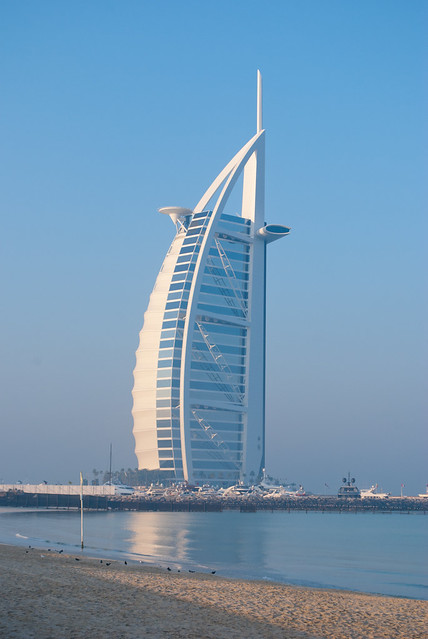 It is interesting to know that Dubai has some beaches, although not all them are open to the public. Some hotels have their private beaches, and there are some others that although they are open to the public, people have to pay to use them.
It is interesting to know that Dubai has some beaches, although not all them are open to the public. Some hotels have their private beaches, and there are some others that although they are open to the public, people have to pay to use them. 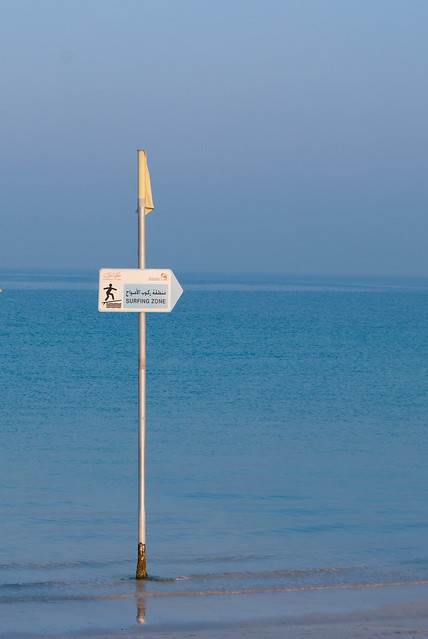 After some hours, the metro was finally opened, and I discovered something I had seen previously in Japan: an only-women car; and something new: a Gold passengers car, this latter with physical separation from the rest. The next stop was the Creek again to see a different picture. Instead of silence and people doing yoga, it was now crowded of people walking around. The Creek was full with abras, small boats that are continuously crossing to the other side of the Creek, full of people, and total lack of safety, but the distances are short… and I can swim.
After some hours, the metro was finally opened, and I discovered something I had seen previously in Japan: an only-women car; and something new: a Gold passengers car, this latter with physical separation from the rest. The next stop was the Creek again to see a different picture. Instead of silence and people doing yoga, it was now crowded of people walking around. The Creek was full with abras, small boats that are continuously crossing to the other side of the Creek, full of people, and total lack of safety, but the distances are short… and I can swim. 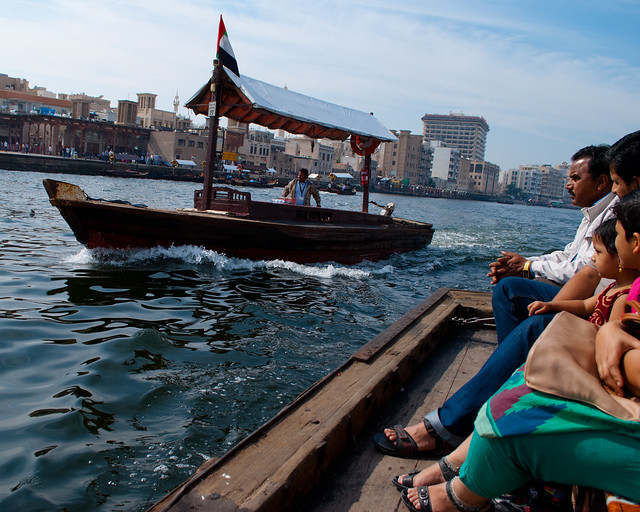 The old part of the city seems to be a fake, because it has gone through a complete renovation, and I found it not very interesting. On the other hand, it was more interesting to visit the Gold Market. Here you can buy gold per grams, or see the tailors working on the surroundings of the bazaar, where most of the business is developed by Persian merchants, who established here first in the end of the 19th century.
The old part of the city seems to be a fake, because it has gone through a complete renovation, and I found it not very interesting. On the other hand, it was more interesting to visit the Gold Market. Here you can buy gold per grams, or see the tailors working on the surroundings of the bazaar, where most of the business is developed by Persian merchants, who established here first in the end of the 19th century. 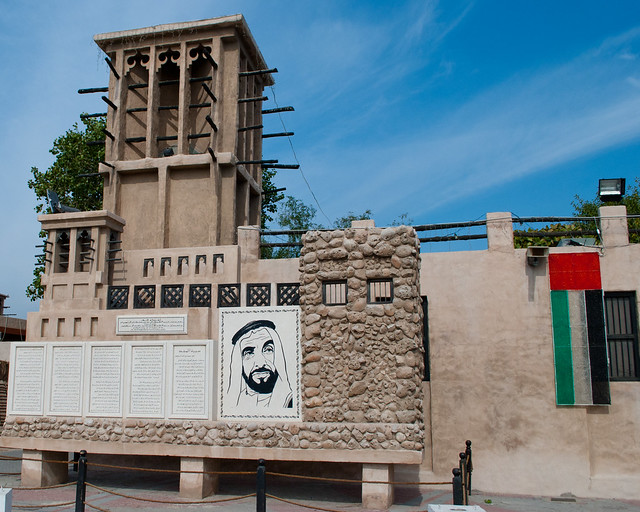 The evening was the perfect time to go to Burj Khalifa (C), the highest building is the world which was made for the sake of it: there is no need to build such a skyscraper in the middle of the desert, unless you want to show off, which is the case. I was told in a flight many years ago, that the building was going to be named something else, but a couple of weeks before the official opening, the sheikh that had financed the construction asked to change the name to his, in spite of having the whole ad campaign and merchandising products with the previous naming, but who cares…
The evening was the perfect time to go to Burj Khalifa (C), the highest building is the world which was made for the sake of it: there is no need to build such a skyscraper in the middle of the desert, unless you want to show off, which is the case. I was told in a flight many years ago, that the building was going to be named something else, but a couple of weeks before the official opening, the sheikh that had financed the construction asked to change the name to his, in spite of having the whole ad campaign and merchandising products with the previous naming, but who cares… 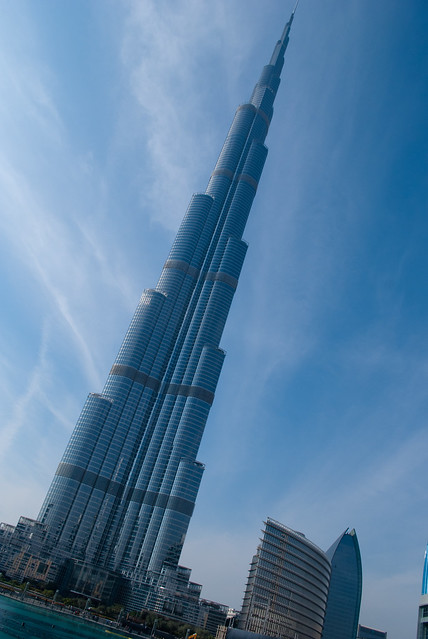 This building is an impressive construction by Adrian Smith, which is seen from the whole city. During the night it is a very narrow set of lights (probably to avoid one of the many Emirates’ Airbus A380 to crash), and during the foggy mornings just a soft shadow.
This building is an impressive construction by Adrian Smith, which is seen from the whole city. During the night it is a very narrow set of lights (probably to avoid one of the many Emirates’ Airbus A380 to crash), and during the foggy mornings just a soft shadow. 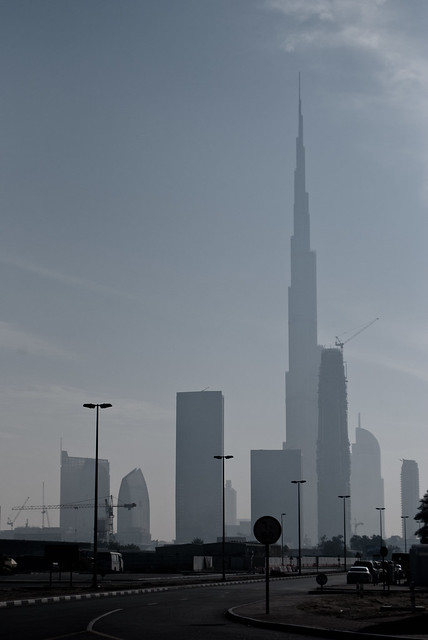
When you are close to it, it is a breathtaking view. It is also recommended to go up and see the sunset (fog permitting), and look down to see how small things are seen from the top of the highest building in the world.
Burj Khalifa is not only the highest skyscraper, but also one of the biggest malls in the World. A huge Aquarium, an ice rink and thousands of shops is worth a visit.
While thinking in the next sailing trip, I am going through the pictures of the previous ones refreshing some great memories, and realizing I had not published any post about it.

After Ibiza and Menorca, we completed the Balearic Island group by sailing around Mallorca for a week. Due to its size, we had to stay only in the Southern part of the island.
Day 1: Palma de Mallorca – Es Trenc (1)
Day 2: Es Trenc (1) – Es Caragol (A) – Cala D’Or (2)
Day 3: Cala D’Or (2) – Cala Barques (B) – Ses Roquetes (3)
Day 4: Ses Roquetes (3) – Sant Elm (4)
Day 5: Sant Elm (4) – Cala Basset (C) – Andratx (5)
Day 6: Andratx (5) – Cala Portal Vells (D) – Palma de Mallorca
Salamanca is one of those cities that are a perfect match for a relaxed weekend trip from Madrid. It has a population of roughly 150,000 and 40,000 of them are university students. Its university is the most ancient in Spain (since the 13th Century) and a number of prominent linked to the Literature have lived for some time in this city, like Miguel de Cervantes (Don Quixote), Fernando de Rojas (La Celestina), or Miguel de Unamuno (Niebla). The town centre is easily reachable by walking distance, and hosts one of the biggest concentrations of tapas bars that I have ever seen (vegetarians might have a hard time, though).
If you need to set a place to meet in Salamanca, this will always be “under the clock in Plaza Mayor”. This square, built in the 18th Century, that used to host markets, fairs, and even bullfights, is now widely used as meeting point by locals, tourists, and especially students, who concentrate it in the evenings in small groups sitting on its floor.
Another significant sight in Salamanca is the Universidad Pontificia. A huge building that was under construction for almost 150 years, after the Queen Isabel II decided to create an institution to train the ones that would then go to the New World to spread the Faith. Initially it was intended to be run by the Jesuists, but it could not work as a Catholic University till 1940, as the Society of Jesus was suppressed by Carlos III. Its guided visit is highly recommended, and the climb to its tower gives breathtaking views of the city.
There are many other buildings that also add interest to the visit to the city: the Casa de las Conchas (now a Library, it used to be a Palace of aristocrats), the Monterrey Palace (now belonging to the Casa de Alba), the Roman Bridge, the University Main Entrance (look for a frog -on a skull- and it will give you good luck and results in your studies), the two Cathedrals, the Patio de Escuelas or the Casa de Lis (an Art Deco museum in an Art Nouveau building with amazing views to the Tormes river).
Apart from a beautiful city itself, Salamanca gives you the opportunity to live through its history the history of the country, as it has always been an active culture centre of Spain. Even in the last years, Salamanca was chosen to host the “Archivo de la Memoria Histórica”, part of which was transferred to Catalonia, within the current internal political battle. The street where this archive lies was named Expolio (pillaging) for many years, and now changed to Gibraltar (location not free from dispute, either).
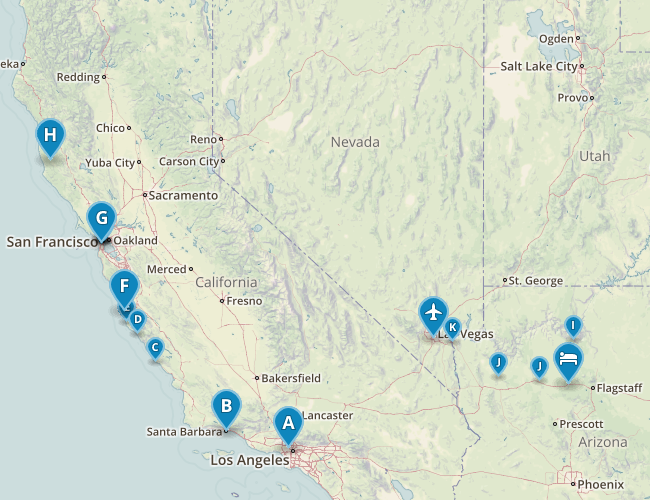
I knew I would be back to Morocco sooner or later, and that it would not be just a city. As I said when I went to Marrakech a couple of years ago, it should be more nature-related, and that was the main excuse for this trip: the desert. Flying to the same city where I had a couple of “issues” in 2010, Marrakech, but soon taking an organized trip to the East to experience the roads and towns of the rural Morocco.

Leaving Marrakech to the East, our bus has to go through the Atlas (G), near to the Toubkal, the highest mountain in the country, normally covered by snow (yes, Morocco does have snow too). Being lucky enough to get the front seats on the minibus, you get to see a lot of things that call your attention on a daily basis.
Donkeys widely used to transport people and other goods. Hitchhikers looking for a ride to the next town. Very frequent police controls (although we did not stop in any of them thanks to the early notice that other drivers made to our driver).
People walking in the middle of desertic roads, many kilometres away from any town. People sitting at sunny side of the road. Shepherds asking the drivers to throw them some water. Children always accompanying their mothers. Men always accompanied by other men. Women carrying herbs, wood, or clothes. Women washing their clothes in the river. Poverty. Too many children not going to the school, and working, or begging the tourists for some money.
The desertic roads we used crossed many huge ravines, dry today, but that clearly show that heavy rains take place there with certain frequency. Looking at the (main) roads that cross them without any bridge, and the fields being grown on their beds, the effect of a flood there must be huge.
Going back to the touristic route, we did our first stop at Ait Ben Haddou (B). First Moroccan trick: “the entry to the town costs 25 dirham, you can come with me, or just stay here and wait for the group to come back”. It is less than 3 Euro, and we all agreed to proceed with the visit, but we soon realized the guide (whose time was included in the package) had found an additional source of income. There was not such a thing like a ticket in this UNESCO Heritage Kasr (group of kasbahs/Berber houses), that has survived for many centuries, in spite of being constructed with adobe (great material for dry and hot weather, but not very resistant to the rains). It has been used as a scenario for many movies, like Game of Thrones, Gladiator or Lawrence de Arabia.
On our way to the desert, we stopped at the Gorge of Dades (C), and at the Todhra Valley (D). Both of them being impressive natural scenarios, and great examples of how powerful the water is in that environment.
And we finally made it to the desert. Our choice had been the desert (E) close to Merzouga and the border with Argelia. Not the biggest Erg in Morocco, but big enough and most accessible from civilisation. We rode our dromedaries (not camels) through the desert in a caravan while the sun was setting, and the sand colours were changing every minute. I had done this trip for those minutes, and it was worth it… in spite of the inconvenience of riding a dromedary for that long (I will not go into details, but the guides -with better knowledge than us- walked all the way to the camp instead of riding those monsters).
When we arrived to the camp, we were soon called to dinner, and then shared some Berber music around the fire, and under millions of stars not seen from the city.
Sleeping in the desert is a cold experience. Riding our dromedaries back before sunrise is even colder. If you ever plan to do this, make sure you bring the following items (especially in winter): gloves, hat, thermal clothes, sleeping bag (you do not want to touch the blankets that they provide you), a backpack, a scarf, a lantern…
After the desert, we had a nice track of 10 hours to go back to Marrakech, crossing some more rocky deserts, lucky riverside valleys, and the snowed Atlas. Once in Marrakech, we had a couple of days to wander around the zouqs, and visit some of the great monuments this imperial city offers: the always busy Jemaa Al-Fna square, the Bahia Palace, the Ben Youssef Madrassa, or the Majorelle Gardens.
The time in Marrakesh was much more relaxed than when I was here in 2010, and I managed to find the way through the erratic streets. I even enjoyed some occasional bargaining in the souq, and had the opportunity to recognize once more the importance for the Spanish image of our football: many people wearing clothing of Real Madrid or Barcelona, graffitis with their logos, people in the zouq watching a Real Madrid match on tiny TVs, or a number of people watching Atletico-Barcelona in Café de Paris.